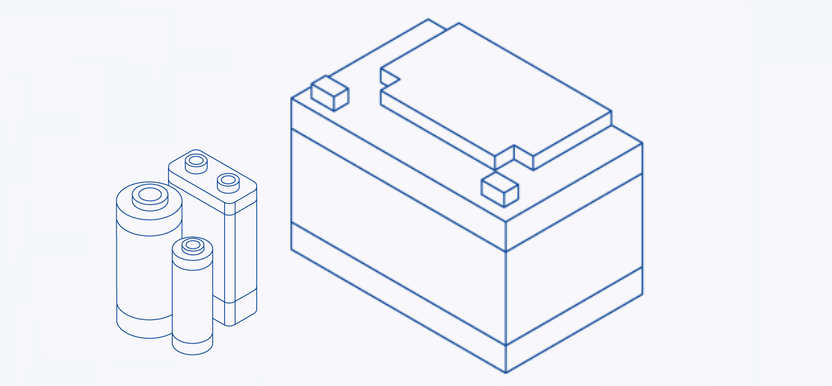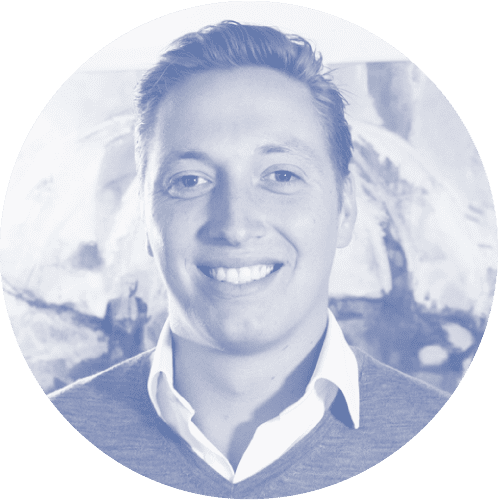The words accumulator and battery are often used for the same concept. But there is certainly a difference between batteries and accumulators. Most professionals, distinguish between primary batteries (non-rechargeable) and secondary batteries (rechargeable).

The word ‘accumulator’ is derived from the English ‘accumulator’, which means ‘something that collects or builds up’. So, a battery stores energy, for example electricity, and can release it again when needed. Back in the days when rechargeable batteries did not exist, the difference between the two was that accumulators could be recharged, and batteries could not. Nowadays, people often talk about rechargeable batteries. So basically, these are accumulators in a battery form. However, in reality, a distinction is made based on the form.
Most people distinguish between batteries and accumulators based on their shape. Batteries often have a standard shape (coin cell, AA, AAA, C, D, 4.5V and 9V), while accumulators are often specially designed for a particular device (such as a car).
However, keep in mind that still a lot of the time, the words batteries and accumulators are used interchangeably, even by professionals.
Because the main difference between the different cells is whether they can be recharged after use, most professionals distinguish between non-rechargeable batteries and rechargeable batteries.
We are a proud representative of top brands like Fiamm, Panasonic, Varta, Saft and Cegasa. We have a wide range of models from these brands available. Beyond the 3,500 distinct items we typically hold in stock, we can also provide almost the entire assortment of all premium brands upon demand.

Daan Schutte
Sales Director
Do you have a question?
Feel free to email or call me!
As a battery specialist, Elfa knows the differences between the different types of batteries. This is of course important to know in order to make the right decision. Here are some of the batteries and accumulators we carry in our assortment.
In many cases, we advise our customers to use lead-acid accumulators. We provide them for different sectors and industries, like defence and energy plants. Among them we offer VRLA (Valve Regulated Lead Acid) and SLA (Sealed Lead Acid) batteries from our expansive assortment. These accumulators are notable for their stationary electrolyte.
We recognize two methods for stabilizing the electrolyte: Gel and AGM. Both methods utilize a sealed container with auto-sealing valves, resulting in a battery that is not only maintenance-free but also safe and long-lasting. The primary distinction between the two lies in the electrolyte and separator used.
Fiamm Pb accumulator 12V 7200mAh High rate LongLife faston6,3
This Fiamm AGM-accumulator is designed to achieve demanding performances to protect from power disturbances. The battery is ideal for UPS systems, emergency power supply systems, IT centers and security systems. Notably, this battery has a low self-discharge rate and can undergo deep discharges in emergency situations.
Mastervolt Pb 12V 200Ah Gel traction
This Mastervolt Gel-traction accumulator is perfect for professional applications. Especially in areas where traditional electricity sources aren’t available. This accumulator is frequently used in emergency power setups, forklifts, and alarm systems.
Li-ion batteries come with many benefits: they are light, have a high energy density and have a very low self-discharge rate. Li-ion and LiPo-batteries represent dominant battery technologies, favoured in mobile applications due to their outstanding energy density coupled with a relatively light weight. One can identify Li-ion batteries by their cylindrical cells, whereas lithium polymer batteries are distinguishable by their flat, prismatic form.
Panasonic Li-ion batt 3,6V 3400mAh NCR18650B
This Panasonic Li-ion cell boasts a high energy capacity, minimal self-discharge and has a lengthy lifespan. It’s a powerful battery that can function in temperatures between -20°C and +60°C. This battery is perfect for industrial purposes.
This Coast LiPo-battery is designed with sustainability in mind. The battery has a robust, yet compact design and comes with a micro-USB-port, so no accessories are needed to charge the battery. This battery is ideal for Coast light torches.
Within a sodium-ion saltwater accumulator is an electrochemical energy storage mechanism that operates on a distinctive saltwater electrolyte. These batteries are ideal for solar energy systems due to their optimization for dailty deep discharge.

Sodium-ion saltwater accumulator-24V112Ah
We provide a solution to any situation. We offer custom made battery packs that are designed to tailor to your desired voltage, capacity and size. Features like size, capacity, and connectors can be customized to your liking. With our three-step process, you can order a battery pack tailored to your specifications. We develop custom battery packs from brands like Saft, Tadiran, Panasonic and Varta.
Would you like to have more information regarding accumulators and batteries? Don’t hesitate to contact us and fill in the form below. We will get back to you as soon as possible.